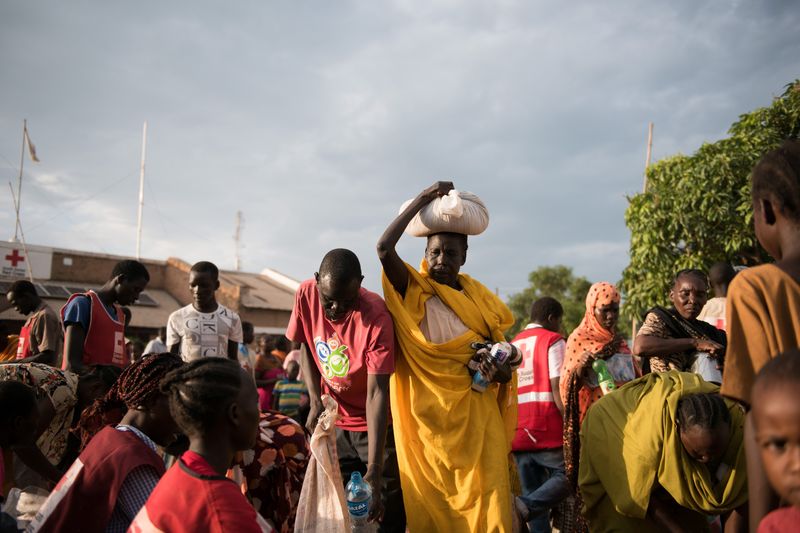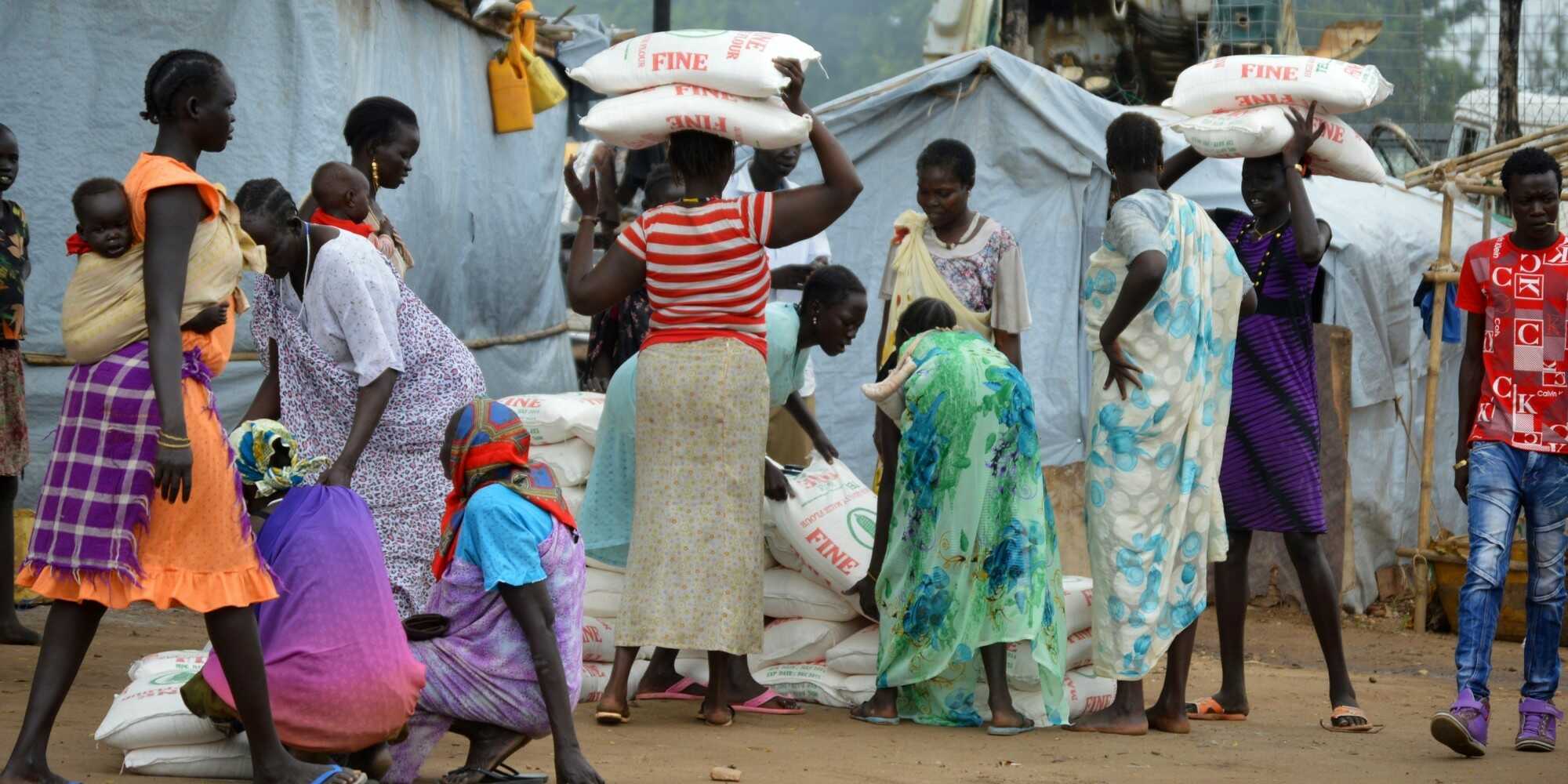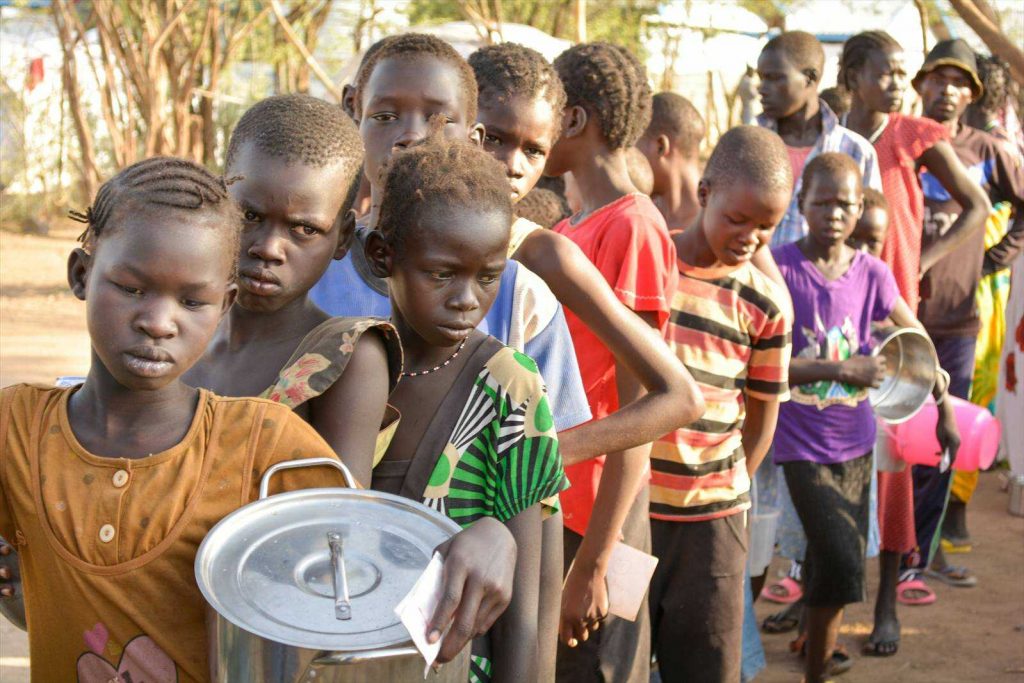After decades of civil war, South Sudan has been named one of the worst places to be a child. Education, food and security are all difficult to access. DW speaks to Save the Children.

Photographer: Charles Lomodong/AFP via Getty Images
In December 2013, civil war broke out in Africa’s newest nation. For many South Sudanese who had hoped for a new beginning, the country’s new chapter turned out to be a continuation of the decades-long conflict. The government split into several factions and the two main rivals, President Salva Kiir and Riek Machar haven’t been able to forge a lasting peace since. In July 2018, the two leaders signed yet another ceasefire deal and a power-sharing agreement for a transitional unity government.
Read also:South Sudan: Confusion over power-sharing deal agreed to by president, rebel leader
Tens of thousands of people have been killed since the outbreak of the conflict and over million people have fled the country. Save the Children’s deputy director for operations in South Sudan, Arshad Malik spoke to DW about how children have been affected by the crisis.
DW: Mr Malik, can you tell us how difficult it is to be a child in South Sudan today?
Arshad Malik: Sixty-three percent of the population in South Sudan are facing severe food insecurity. Linked to that we have protection issues. We have a large number of children who are recruited as armed soldiers by all the parties.
Up to April, 17 counties were in IPC 4, which is a technical terms used for pre-famine stage. As we speak, 31 counties have entered this stage. Remember, this is despite all the [humanitarian] programs happening in the country.
Fifty percent of under-five children are facing malnourishment and between 40 to 50 percent of the population is displaced. They are either refugees in other countries or are displaced within their country. It’s one of the worst countries to be a child. So that’s the state of affairs for a child in South Sudan.
How accessible are the areas where these children need your help?
Last year President Salva Kiir pledged that his government will support all aid organizations to reach vulnerable people. Did that materialize?
The capacity of the government at the moment and the infrastructure has an impact. So does the joblessness and the economic situation. The South Sudanese Pound has depreciated from 182 to the dollar in December 2017 to 330 in July. I’m talking about the open market, not the official bank rate which is kind of stable. So this has a negative impact on the food crisis.

Whether the promise by the president has materialized? I’ll say there was a sincere effort from the Relief and Rehabilitation Commission in the government – that is the body which coordinates the overall operation of humanitarian organizations in the country. But there was a sincere effort.
How much funding do you need and where is money going to come from?
It’s hard to put a figure on the table. I can take you through the consolidated appeal which was sent out by the UN. For education they need $60 million (€51 million) for basic education services. For food security and livelihoods they need $27 million (€23.2 million). And nutrition and health is about the same. As I speak we have around $29 million (€24 million) funding confirmed for this year. However due to the high operational costs, this money is not enough to deliver essential services. And all the humanitarian agencies working in South Sudan are facing the same problem.
Do you think the situation will improve?
South Sudan is a neglected response. Most of the attention of the donors is focused on Syria and Yemen because they are getting a lot of media attention. It is a complex problem for the European community. They want to contain the refugee influx into Europe. So they are investing more into Syria and Yemen. South Sudan is not posing the same threat to the European community and the Western world.
There are signs of donor fatigue. So all of that will have a negative impact on the children of South Sudan. Government doesn’t have the capacities at this point in time until the time when the peace agreement is signed and the situation settles down, which will take time. That gap between the peace process and the government having the capacity to deliver essential services to the people is critical and that’s where we as the international community need to keep supporting government and the people of South Sudan.

